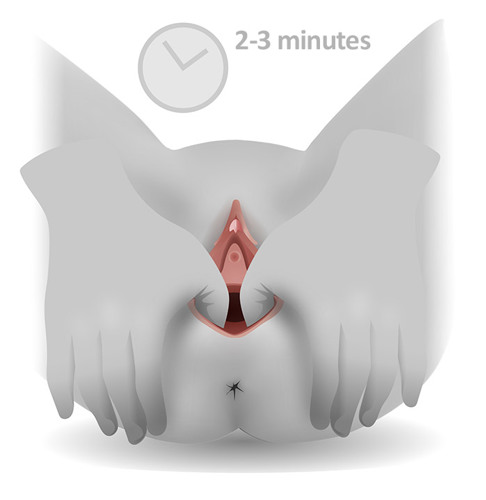The following animation explains what an OASI is, the four components of the OASI Care Bundle and how women can reduce their risk of sustaining an OASI in childbirth.
Clinicians can use this animation to support discussions with women and pregnant people about OASI in the antenatal period.
- Click here to view the animation in English
- Click here to view the animation in Urdu
- Click here to view the animation in Bengali
- Click here to view the animation in Spanish
- Click here to view the animation in Pashto
- Click here to view the animation in Arabic
- Click here to view the animation in Punjabi
If you are experiencing any of these issues because of childbirth, talk to your midwife, doctor, health visitor or GP about the support available in your area.
Download this patient information document to learn more: Perineal Health in Pregnancy, Birth and Beyond
How to reduce the severity of tearing
First- and second-degree perineal tears are most common type and are unlikely to cause long-term problems.
For third- and fourth-degree tears, there is often no clear reason why this happens, and it is not possible to predict. However, it is more likely if:
- This is your first vaginal birth
- Your baby is over 4kg (9lb)
- You have a long second stage of labour (the stage during which you push your baby out)
- Your baby’s shoulder gets stuck behind the pubic bone (shoulder dystocia)
- You have an instrumental vaginal birth (forceps or vacuum assisted)
This page provides information on perineal massage while pregnant, and perineal protection at the time of birth.
Perineal massage while pregnant
From 35 weeks onwards, you or your partner can use daily perineal massage until your baby is born which may reduce your risk of tearing.
This is particularly beneficial for first-time mothers. You may choose to ask your partner to help you with this.
Perineal massage tips
- Warm bath
Sit in a warm bath before you start. This may help you to relax before the massage and loosen the muscles around your perineum. - Short nails
The tissues in your vagina and perineum are very delicate. Make sure your nails are short to prevent scratching the skin, or any discomfort to the area. - Comfortable position
You need to be relaxed during the massage, so it's important you find a comfortable position. The best place to perform this massage is in bed. Prop yourself up with pillows to support your back and bend your knees. - Lubricant
Use a lubricant like vitamin E oil, almond oil or olive oil. - Thumbs
Hold your thumbs in the position shown for about 1 minute (diagram below). Press down towards the anus and to the sides of the vagina walls. Hold your thumbs in this position for about 1 minute. You will begin to feel a stretching sensation. Breathe deeply. - Gentle massage
Gently massage the lower half of your vagina using a U shaped movement for 2-3 minutes. Repeat this 2-3 times. - Repeat daily or when possible
It may take a couple of weeks of daily massage before you notice more elasticity in your perineal area.

Perineal protection at the time of birth
Birth position
- Your healthcare professional will work with you so that you can birth in your chosen position. A kneeling, or all-fours position, or lying on your side, may be beneficial and reduce the severity of tearing.
Warm compress
- Your healthcare professional can gently place a warm compress (pad, swab or gauze) on the perineum as the baby’s head stretches the perineal tissues. This can help to reduce the severity of tearing.
A 'hands-on' birth
- Your healthcare professional can support your perineum as your baby is being born. This is called manual perineal protection, or a 'hands on birth'.
- Manual perineal protection can be provided in any birth position, apart from in the water or on a birthing stool.
- It is only used for a short period, during the birth of your baby and it can help to reduce the severity of tearing.
Your healthcare professional should also work with you to ensure that you have a slow and controlled birth.
If you are concerned about tears or have any questions, speak to your healthcare professional. They will be able to discuss any increased risk factors related to your birth, and what they and you can do to try to prevent them.
Further information
NHS: Preventing a perineal tear
https://www.nhs.uk/conditions/pregnancy-and-baby/episiotomy/#preventing-a-perineal-tear
NCT: Perineal massage
https://www.nct.org.uk/pregnancy/worries-and-discomforts/common-discomforts/perineal-massage
